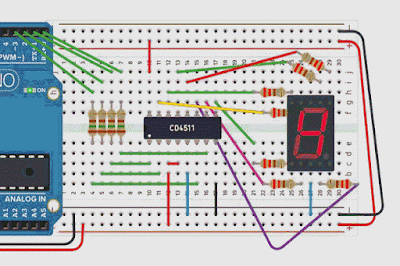
/*
* To change this license header, choose License Headers in Project Properties.
* To change this template file, choose Tools | Templates
* and open the template in the editor.
*/
package relogioAnalogico;
import java.util.Calendar;
import java.util.GregorianCalendar;
import javafx.application.Application;
import javafx.application.Platform;
import javafx.scene.layout.Pane;
import javafx.scene.paint.Color;
import javafx.scene.shape.Circle;
import javafx.scene.shape.Line;
import javafx.scene.text.Text;
/**
*
* @author HENRIQUE
*/
public class Clock extends Pane implements Runnable {
private int hour;
private int minute;
private int second;
// Largura e altura do painel do relógio
private double w = 250, h = 250;
/** Cria o relógio com a hora atual do sistema */
public Clock() {
setCurrentTime();
Thread t = new Thread(this);
t.setDaemon(true);
t.start();
}
/** Cria o relógio com o horário especificado nos parâmetros */
public Clock(int hour, int minute, int second) {
this.hour = hour;
this.minute = minute;
this.second = second;
paintClock();
}
public int getHour() {
return hour;
}
public void setHour(int hour) {
this.hour = hour;
paintClock();
}
public int getMinute() {
return minute;
}
public void setMinute(int minute) {
this.minute = minute;
paintClock();
}
public int getSecond() {
return second;
}
public void setSecond(int second) {
this.second = second;
paintClock();
}
public double getW() {
return w;
}
public void setW(double w) {
this.w = w;
paintClock();
}
public double getH() {
return h;
}
public void setH(double h) {
this.h = h;
paintClock();
}
/* Set the current time for the clock */
public void setCurrentTime() {
// Cria um calendar com a hora atual do sistema
Calendar calendar = new GregorianCalendar();
// Set current hour, minute and second
this.hour = calendar.get(Calendar.HOUR_OF_DAY);
this.minute = calendar.get(Calendar.MINUTE);
this.second = calendar.get(Calendar.SECOND);
paintClock(); // Atualiza o gráfico do relógio
}
/** Desenha o relógio */
private void paintClock() {
// Inicializa os parâmetros gráficos do relógio
//proporção da dimensão do relógio
double clockRadius = Math.min(w, h) * 0.8 * 0.5;//80% do painel e 20% afastado do relogio
double centerX = w / 2;
double centerY = h / 2;
// Desenha o círculo
Circle circle = new Circle(centerX, centerY, clockRadius);
circle.setFill(Color.WHITE);
circle.setStroke(Color.BLACK);
//posicionamentos
Text t1 = new Text(centerX - 5, centerY - clockRadius + 12, "12");//decrementando o tamanho do raio para ficar no centro
Text t2 = new Text(centerX - clockRadius + 3, centerY + 5, "9");
Text t3 = new Text(centerX + clockRadius - 10, centerY + 3, "3");
Text t4 = new Text(centerX - 3, centerY + clockRadius - 3, "6");
Text t5 = new Text(centerX - clockRadius + 9, centerY + 5, "7");
// Desenha o ponteiro do segundo
double sLength = clockRadius * 0.8;
double secondX = centerX + sLength *
Math.sin(second * (2 * Math.PI / 60));
double secondY = centerY - sLength *
Math.cos(second * (2 * Math.PI / 60));
Line sLine = new Line(centerX, centerY, secondX, secondY);
sLine.setStroke(Color.RED);
/*
* Outra possibilidade é utilizar a classe Rotate. Você set o ponteiro para o meio dia (12:00) e
* rotaciona de acordo com a respectiva hora/minuto/segundo
* sLine.getTransforms().add(new Rotate(360/60 * second,centerX,centerY));
*/
// Desenha o ponteiro do minuto
double mLength = clockRadius * 0.65;
double xMinute = centerX + mLength *
Math.sin(minute * (2 * Math.PI / 60));//comprimento do arco
double minuteY = centerY - mLength *
Math.cos(minute * (2 * Math.PI / 60));
Line mLine = new Line(centerX, centerY, xMinute, minuteY);
mLine.setStroke(Color.BLUE);//linha do segundo
System.out.println(hour+":"+minute+":"+second);
// Desenha o ponteiro da hora
double hLength = clockRadius * 0.5;
double hourX = centerX + hLength *
Math.sin((hour % 12 + minute / 60.0) * (2 * Math.PI / 12));
double hourY = centerY - hLength *
Math.cos((hour % 12 + hour / 60.0) * (2 * Math.PI / 12));
Line hLine = new Line(centerX, centerY, hourX, hourY);
hLine.setStroke(Color.GREEN);
getChildren().clear();
getChildren().addAll(circle, t1, t2, t3, t4, t5,sLine, mLine, hLine);
}
@Override
public void run() {
while (true) {
try {
Thread.sleep(1000);
} catch (InterruptedException e) {
e.printStackTrace();
}
Platform.runLater(new Runnable() {//classe do FX//passando na classe para gerenciar
@Override
public void run() {
setCurrentTime();
}
});
}
}
Classe ClockTest
package relogioAnalogico;
import javafx.application.Application;
import javafx.scene.Scene;
import javafx.stage.Stage;
/**
*
* @author HENRIQUE
*/
public class ClockTest extends Application{
Clock clock = new Clock();
@Override
public void start(Stage stage) throws Exception{
Scene scene = new Scene(clock, 250, 250);
stage.setScene(scene);
stage.show();
}
public static void main(String[] args) {
Application.launch(args);
}
}
Palavras chave:
ജാവയിലെ അനലോഗ് ക്ലോക്ക്
Аналоговий годинник у Java
Saacadda analog ee java
Analog klocka i java
នាឡិកាអាណាឡូកនៅចាវ៉ា
Analog jam ing jawa
Жава дахь аналог цаг
जाभामा एनालग घडी
Analoge klok yn java
Analóg óra java-ban
שעון אנלוגי בג'אווה
जावा में एनालॉग घड़ी
Đồng hồ analog trong java
































